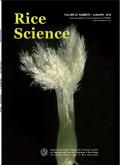Harnessing Advanced Genomic Approaches to Unveil and Enhance Brown Planthopper Resistance in Rice
IF 6.1
2区 农林科学
Q1 AGRONOMY
引用次数: 0
Abstract
Brown planthopper (BPH) is a highly destructive pest that presents a significant challenge to rice production, particularly in the Asia-Pacific region. Numerous BPH-resistant rice varieties have been successfully bred and released for commercial cultivation across diverse rice-growing ecosystems. However, resistance breakdown in several varieties carrying major resistance genes has been reported, highlighting the urgent need for the development of novel, genetically diverse, and broad-spectrum resistant varieties. To date, more than 45 resistance loci have been identified and mapped from both cultivated and wild rice species. Among these, a subset of genes (including Bph1, Bph3, Bph6, Bph7, Bph9, Bph10, Bph14, Bph15, Bph18, Bph21, Bph26/2, bph29, Bph32, Bph37, and Bph30/Bph40) have been positionally cloned. Most of these genes encode coiled-coil nucleotide-binding leucine-rich repeat proteins, which are central to plant immune responses, along with a few signaling molecules playing pivotal roles. In addition to these core resistance genes, various other genetic components, including miRNAs, protein kinases, and transcription factors, have been functionally characterized for their roles in mediating BPH resistance. The advent of post-genomic tools such as RNA sequencing and single-cell sequencing, along with cutting-edge genomic technologies like CRISPR/Cas gene editing, has significantly accelerated resistance breeding programs. In this context, we provide an overview of genetics, mapping, isolation, and functional characterization of BPH resistance, along with strategies for incorporating resistance using advanced genomics-assisted breeding tools. Furthermore, we present a snapshot of how the integration of genomics and novel breeding technologies holds great promise for dissecting the genetic architecture of pest resistance and accelerating crop improvement.
利用先进的基因组方法揭示和增强水稻对褐飞虱的抗性
褐飞虱(BPH)是一种极具破坏性的害虫,对水稻生产构成重大挑战,特别是在亚太地区。许多抗白粉病的水稻品种已经成功培育出来,并在不同的水稻种植生态系统中进行商业化种植。然而,一些携带主要抗性基因的品种的抗性已经被破坏,这表明迫切需要开发新的、遗传多样化的、广谱的抗性品种。迄今为止,已从栽培稻和野生稻中鉴定和绘制了45多个抗性位点。其中,Bph1、Bph3、Bph6、Bph7、Bph9、Bph10、Bph14、Bph15、Bph18、Bph21、Bph26/2、bph29、Bph32、Bph37和Bph30/Bph40已被定位克隆。这些基因中的大多数编码盘绕式核苷酸结合的富含亮氨酸的重复蛋白,这是植物免疫反应的核心,以及一些起关键作用的信号分子。除了这些核心耐药基因外,各种其他遗传成分,包括mirna、蛋白激酶和转录因子,在介导BPH耐药方面的作用已经被功能表征。RNA测序和单细胞测序等后基因组工具的出现,以及CRISPR/Cas基因编辑等尖端基因组技术,极大地加速了耐药性育种计划。在此背景下,我们概述了BPH抗性的遗传学,定位,分离和功能表征,以及使用先进的基因组学辅助育种工具整合抗性的策略。此外,我们还简要介绍了基因组学和新育种技术的整合如何为剖析害虫抗性的遗传结构和加速作物改良带来巨大希望。
本文章由计算机程序翻译,如有差异,请以英文原文为准。
求助全文
约1分钟内获得全文
求助全文
来源期刊

Rice Science
Agricultural and Biological Sciences-Agronomy and Crop Science
CiteScore
8.90
自引率
6.20%
发文量
55
审稿时长
40 weeks
期刊介绍:
Rice Science is an international research journal sponsored by China National Rice Research Institute. It publishes original research papers, review articles, as well as short communications on all aspects of rice sciences in English language. Some of the topics that may be included in each issue are: breeding and genetics, biotechnology, germplasm resources, crop management, pest management, physiology, soil and fertilizer management, ecology, cereal chemistry and post-harvest processing.
 求助内容:
求助内容: 应助结果提醒方式:
应助结果提醒方式:


